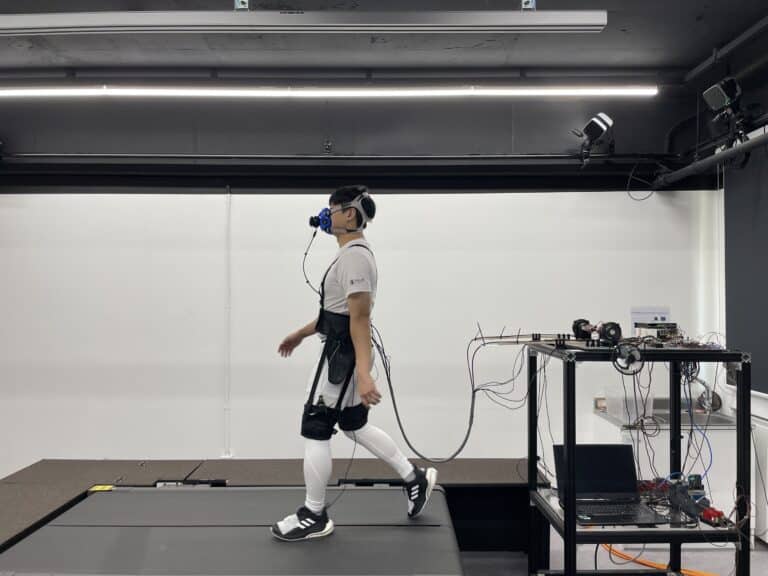Wearable robot crafted at Chung-Ang University’s Assistive and Rehabilitation Robotics Lab aims to aid in hip abduction. (Image credit: Park et al.)
In the realm of robotics and assistive technology, groundbreaking developments are continuously reshaping the landscape of healthcare, rehabilitation, and the overall quality of life for individuals facing mobility challenges. The Assistive and Rehabilitation Robotics Lab at Chung-Ang University in South Korea has recently unveiled an innovative wearable robot designed to address difficulties in walking associated with aging, muscle weakness, surgeries, or specific medical conditions.
The research, detailed in a paper published in Science Robotics, introduces a wearable robot specifically tailored for hip abduction assistance, focusing on lateral movements in the frontal plane of the human body. Unlike previous systems that predominantly targeted movements in the sagittal plane, this novel approach acknowledges the three-dimensional nature of walking, emphasizing the importance of lateral stability.
Giuk Lee, a researcher involved in the study, highlighted the motivation behind the project, stating, “Our recent paper was primarily inspired by the recognition that most wearable robots for gait assistance have focused solely on movements in the sagittal plane. However, walking is inherently a three-dimensional activity, and movements in other planes are just as crucial.”
The wearable robot operates on the principle that mimicking the natural hip abduction moment, the movement of the leg away from the body’s midline, can reduce the metabolic cost of walking. By supporting lateral body movements during the recovery phase of walking, where the body’s center of mass naturally shifts side to side for balance, the robot assists hip abduction muscles, making it easier for the wearer to maintain balance with less effort.
Myunghee Kim, co-author of the paper, emphasized the significance of lateral assistance in walking efficiency. The study demonstrated a remarkable 11.6% reduction in the metabolic cost of walking compared to unassisted walking, showcasing the potential of the wearable robot to enhance both gait efficiency and balance.
Lee underlined the importance of considering movements across various planes, stating, “Since walking is a three-dimensional motion, it’s essential to consider movements across various planes.” The lateral assistance provided by the robot could be particularly beneficial for individuals with reduced muscle strength, paving the way for transformative rehabilitation and support strategies.
Looking ahead, the researchers envision further exploration of how hip abduction influences walking balance. The observed improvements in gait efficiency and potential impacts on balance open avenues for future research into wearable robots’ broader applications in enhancing mobility.
As the team aims to delve deeper into the intricate relationship between hip abduction and walking balance, the wearable robot emerges as a promising technology that could be refined and eventually commercialized. With the potential to aid older adults, post-surgery patients, and individuals facing walking difficulties, this innovative robotic system stands at the forefront of advancing mobility solutions and improving the lives of those with mobility challenges.
References
Fadelli, Ingrid 2023, A wearable robot that assists people with walking, Tech Explore, viewed 28th November 2023, https://techxplore.com/news/2023-11-wearable-robot-people.html




















